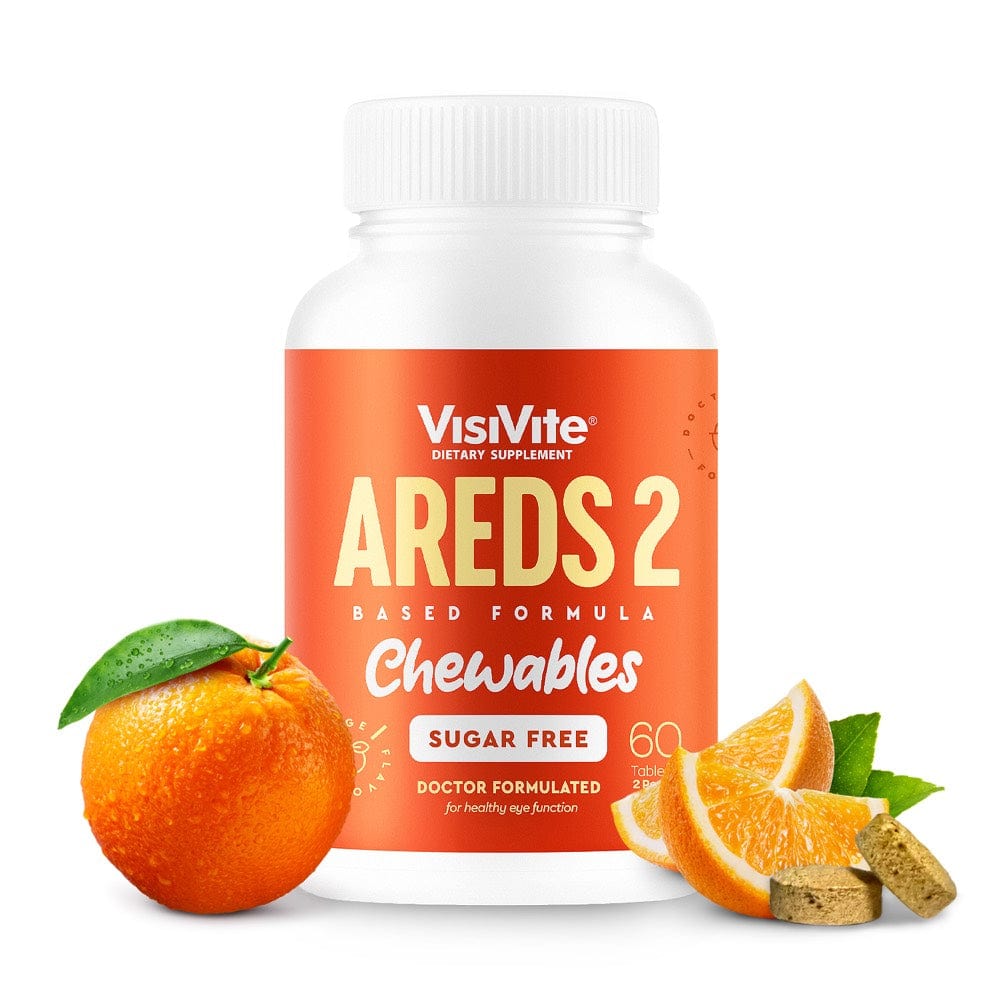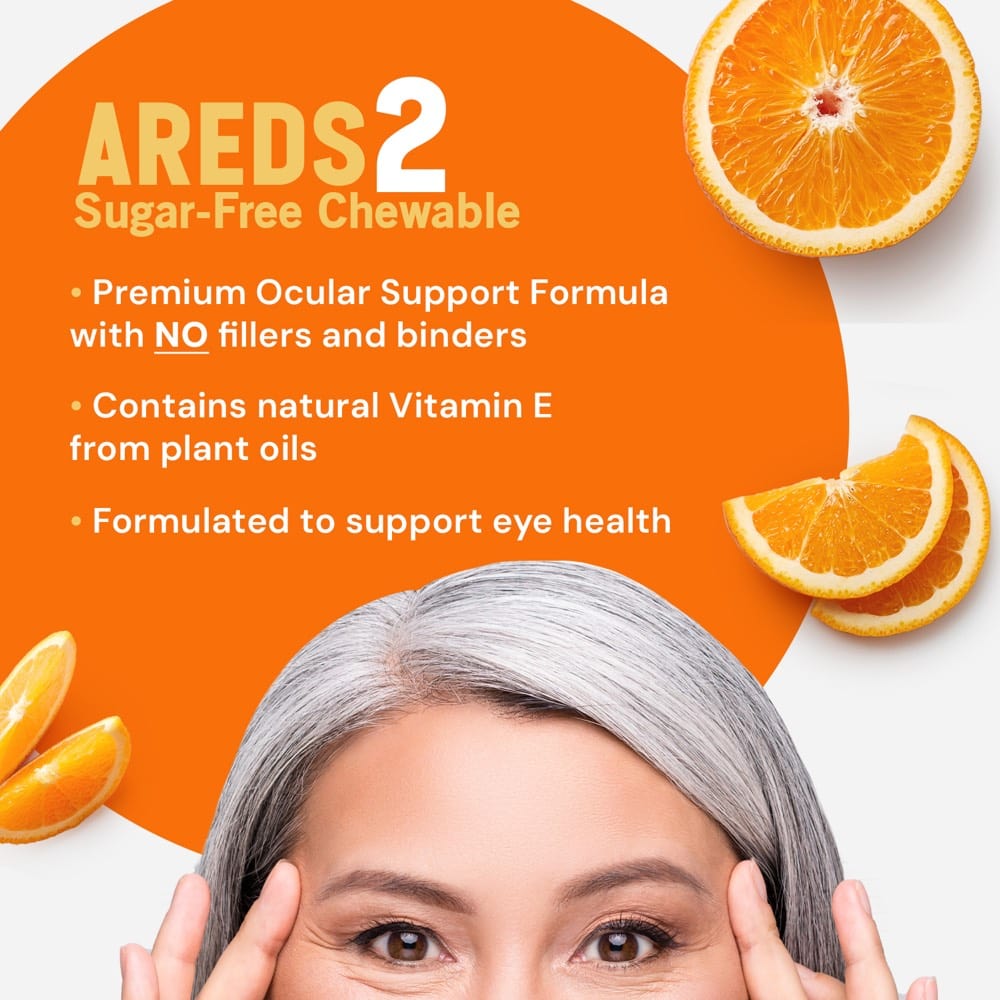In late 2001, the National Eye Institute announced the first eye vitamin formula that was successful in slowing the progress of age-related macular degeneration (AMD). The study was known as AREDS, or the Age-Related Eye Disease Study. This article explains the differences between AREDS vs AREDS 2.

It was a ground-breaking study for several reasons, but mostly because until that moment, while eye vitamins stocked the shelves at most pharmacies and grocery stores, there was no proven benefit against an eye condition that could proceed to blindness.
The study was unique for several reasons that made it more powerful in its conclusions than any prior study:
- It involved 3,640 of patients.
- The study took 6 years to complete.
- The study participants were RANDOMIZED. This meant that participants did not know if they were receiving the full AREDS formula, zinc alone, or placebo. And the researchers didn't know what formula the participants were on either. This made the study even better, because when both participant and researcher do not know what is being tested, it is known as DOUBLE BLIND.
- The study was PROSPECTIVE. This means that rather than look back at paperwork and records and try to determine what people were taking and drawing conclusions, the AREDS research started from ground zero. When researchers do this, they strive to disprove the NULL HYPOTHESIS. In the case of AREDS, the null hypothesis would be, "These nutritional supplements will not be of benefit for people with macular degeneration." When the supplement ingredients are found to be beneficial, voila! The null hypothesis has been proven incorrect, and the study now has an important finding.
Prospective, randomized, double-blind studies are the most important and powerful in scientific research.
AREDS found that 5 ingredients, taken in high doses, were effective in slowing (but not reversing or curing) age-related macular degeneration:
- Beta-carotene: 25,000 IU (beta-carotene is a precursor form of Vitamin A)
- Vitamin C: 500 mg
- Vitamin E: 400 IU
- Zinc: 80 mg
- Copper: 2 mg (prevents a zinc-induced anemia)
And interestingly, AREDS found that zinc alone was nearly as beneficial as all five ingredients.
But as important as AREDS was, there were two problems with the study ingredients.
- Beta-carotene, a precursor form of Vitamin A, was found it two large population studies to unexpectedly increase the rate of lung cancer in heavy smokers. In each of the studies, the opposite was expected, due to its anti-oxidation effects. Both studies had to be halted mid-stream when the findings showed the higher risks.
- Although of benefit, the high zinc caused some patients to have side effects that required medical care, including urinary tract disorders.
Why weren't lutein and zeaxanthin used in AREDS? At the time of the study, they were not yet commercially available.
In May 2013, the National Eye Institute followed up with the the AREDS 2 research to address the issues above.
Like AREDS, AREDS 2 involved thousands (4,203) of patients studied over five years. In comparing AREDS vs AREDS 2, the latter study was more complex, and attempted to look at the interplay of multiple factors.
The AREDS 2 conclusions are below, and show differences when comparing AREDS vs AREDS 2.
- A modified AREDS Formula with both Lutein and Zeaxanthin, but without beta-carotene, was 18% more effective than that the original AREDS research.
- Lutein and Zeaxanthin absorption was improved when beta-carotene was removed from the formula.
- Beta carotene was again proven to increase lung cancer in former smokers.
- No significant decrease in benefit was found with 25 mg daily Zinc versus 80 mg daily.
- Omega 3s were NOT found to be beneficial in Grade 3 and 4 macular degeneration patients.
Based upon AREDS vs AREDS 2, VisiVite AMD supplements do not contain beta-carotene. The Zinc levels in most VisiVite AMD formulas have also been reduced to 40 mg daily except for VisiVite AREDS 2 E-Free Blue Formula (because it contains one fewer ingredient with no Vitamin E) and VisiVite AREDS 2 Zinc-Free White Formula, when genetic testing of Complement Factors shows benefit for some people to remove zinc from the 6 ingredients recommended in AREDS 2. Finally, the copper level has been reduced to maintain the 40:1 zinc to copper ratio used in AREDS 2.














